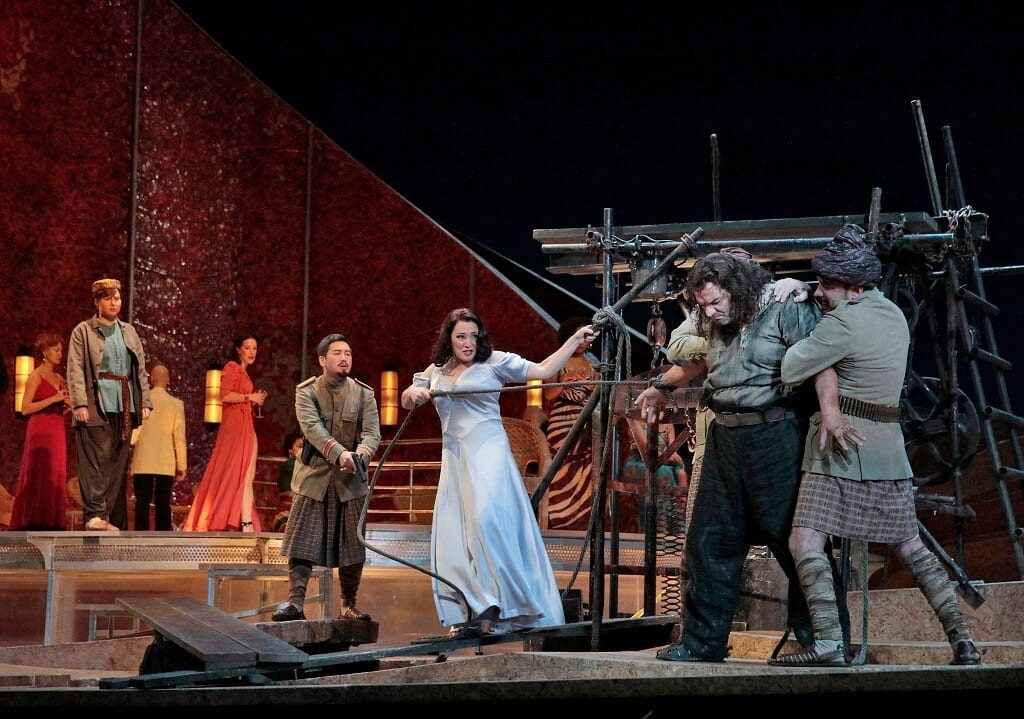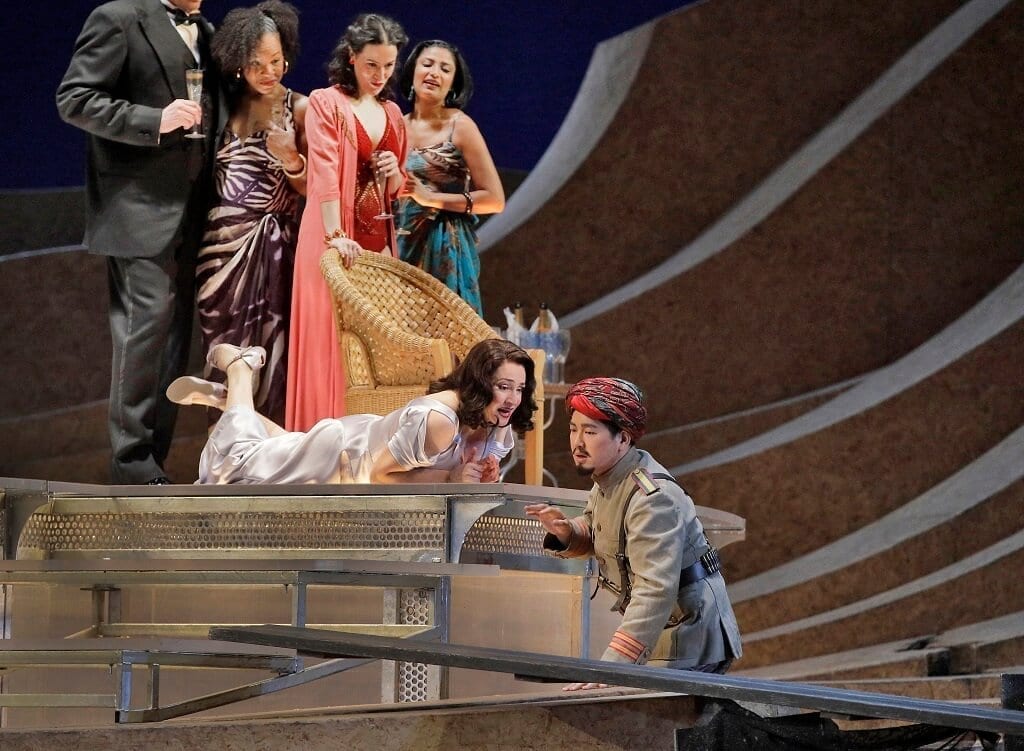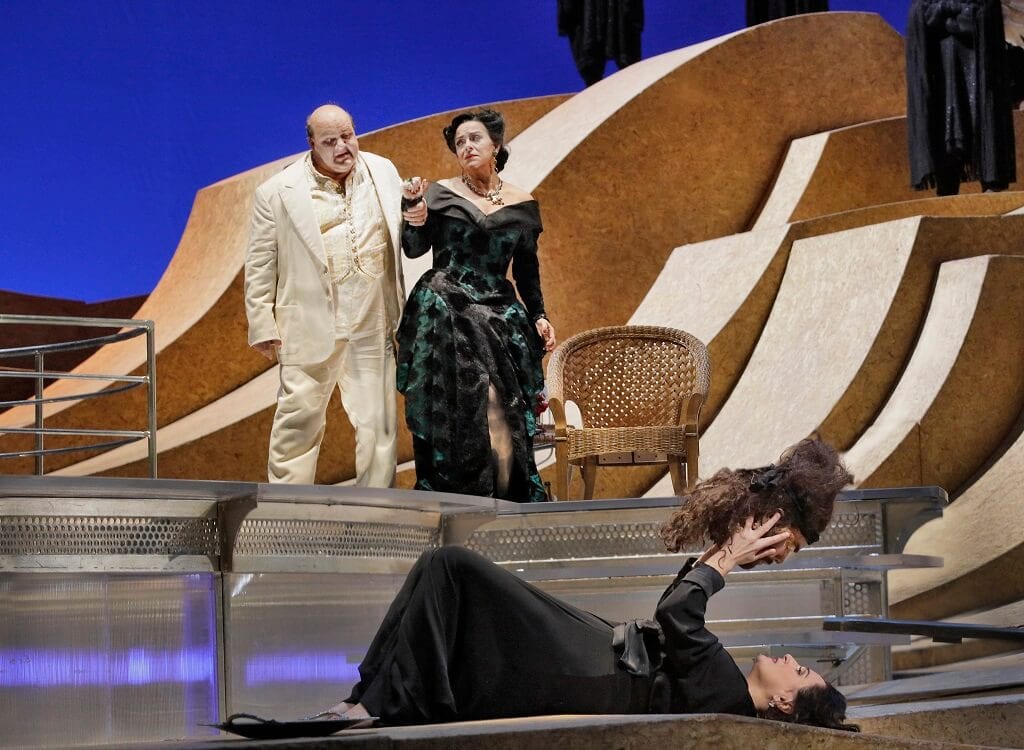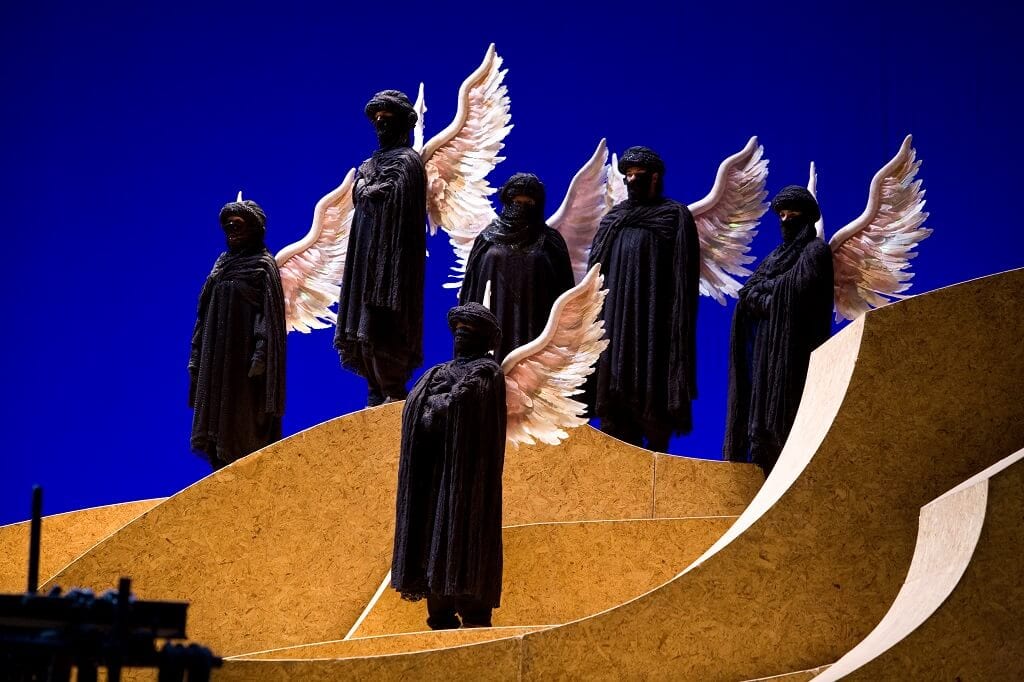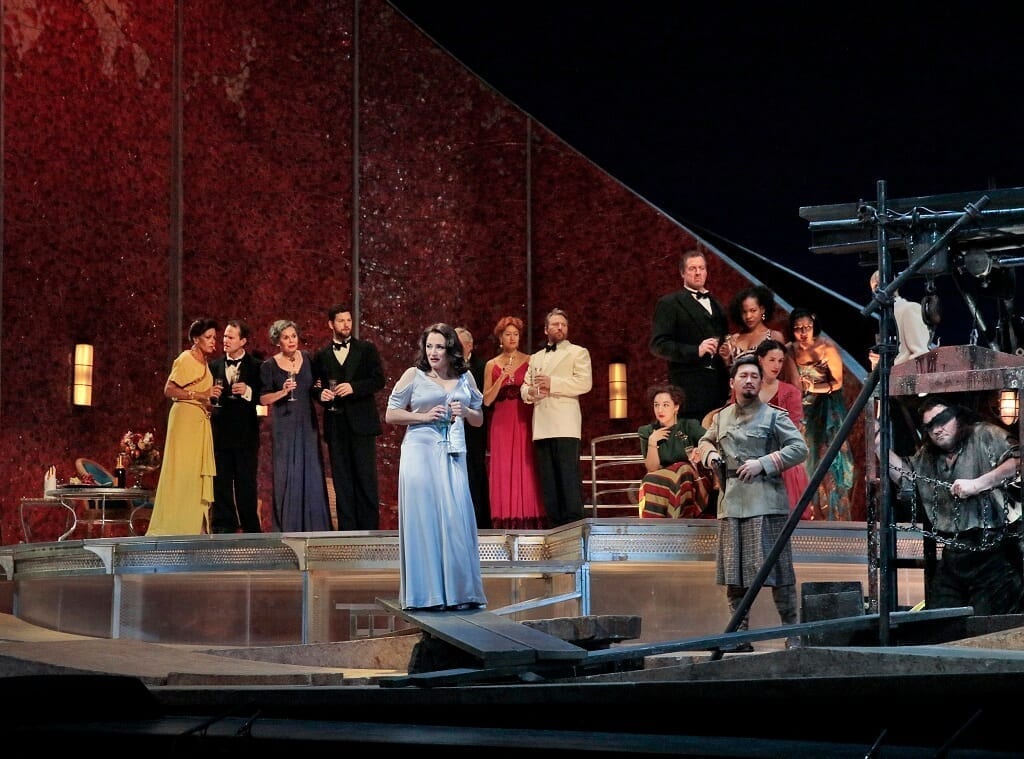Power corrupts, and absolute power corrupts disgustingly. That seems to be the message behind Richard Strauss’s opera Salome, adapted from the widely banned Oscar Wilde play. Wilde started with a brief but strange passage in the Christian Bible about a Judean princess of King Herod’s asking for the head of St. John the Baptist as a reward for dancing for him. Wilde then imaginatively added that Herod had a sexual fascination with this step-daughter who was actually his blood niece, and added in turn that the niece/step-daughter had a bizarre sexual obsession with the imprisoned St. John. These inventions laid the groundwork for some of the most disturbing extended scenes in the opera canon. The work seems to revel in the utter destruction of moral boundaries that can occur when the presence of the Almighty (in the form of the Christian prophet John) is disregarded.
This is far, far from a criticism of the almost madcap, surreal production at the Met. Jurgen Flimm places the action in an ambiguous present, a decayed, soaring modernist mansion at the edge of a desert. Glitterati guests mingle, cocktails in hand, as kilted warriors guard against intruders from the nearby brown hills. In the foreground is the almost steampunk contraption for keeping Jochanaan (Hebrew for John, sung with deep conviction and otherworldly majesty by Greer Grimsley) jailed in the dark cistern below ground. Gerhard Siegel gives us the crazed Herod as a self-indulgent, rich, man-child. Nancy Fabiola Herrera as his disrespected wife Herodias, is a biblical Madeleine Kahn, scolding, demanding, drinking too much and propping herself up awkwardly as she contains her hurt pride. We also get a gathering of bearded Jewish scholars in their long black coats, played for laughs with their Yiddishy gesticulations, arguing minutia and missing the presumed higher truth. This Ping-Pang-Pong comical turn is arguably preferable to how they might have been portrayed within this religious framework.
And then of course there is Pauline Racette who delivers herself over unflinchingly to the plight and extreme vocal demands of Salome, lending an air of nobility to this strange heroine who makes a doubly perverse bargain: She will dance for Herod for a reward of her choosing. The dance is the famous “Dance of the Seven Veils” that culminates in her total nudity. Flimm totally went for it, as of course did Racette. The suggestion of total nudity would have been more effective, in my opinion, rather than suddenly make us aware of the predicament of Racette rather than the predicament of Salome. I do not believe male opera singers are ever asked to do as much to pursue their art.
And the reward Salome famously asks, the head of the holy man Jochanaan who had refused her a kiss, is just as fully revealed on stage. Strauss demands we see Salome’s extended necrophilic fascination. And that ultimate kiss.
Strauss verges well into the Modern as the restless orchestra careens and wails. This is pure expression, nothing merely tuneful. There is madness here, and frenzy, outrage, and the very occasional sound of heaven around Jochanaan.
In the end, one or two at a time, black-robed, pink-winged angels gather on the nearby hills to bear witness to the moral sordor. It’s an unforgettable image that, like so much in opera, bypasses reason in a pure aesthetic siege. I heartily recommend opera to adventurous theatregoers, even this opera. I do not, however, recommend Salome as your first taste.

